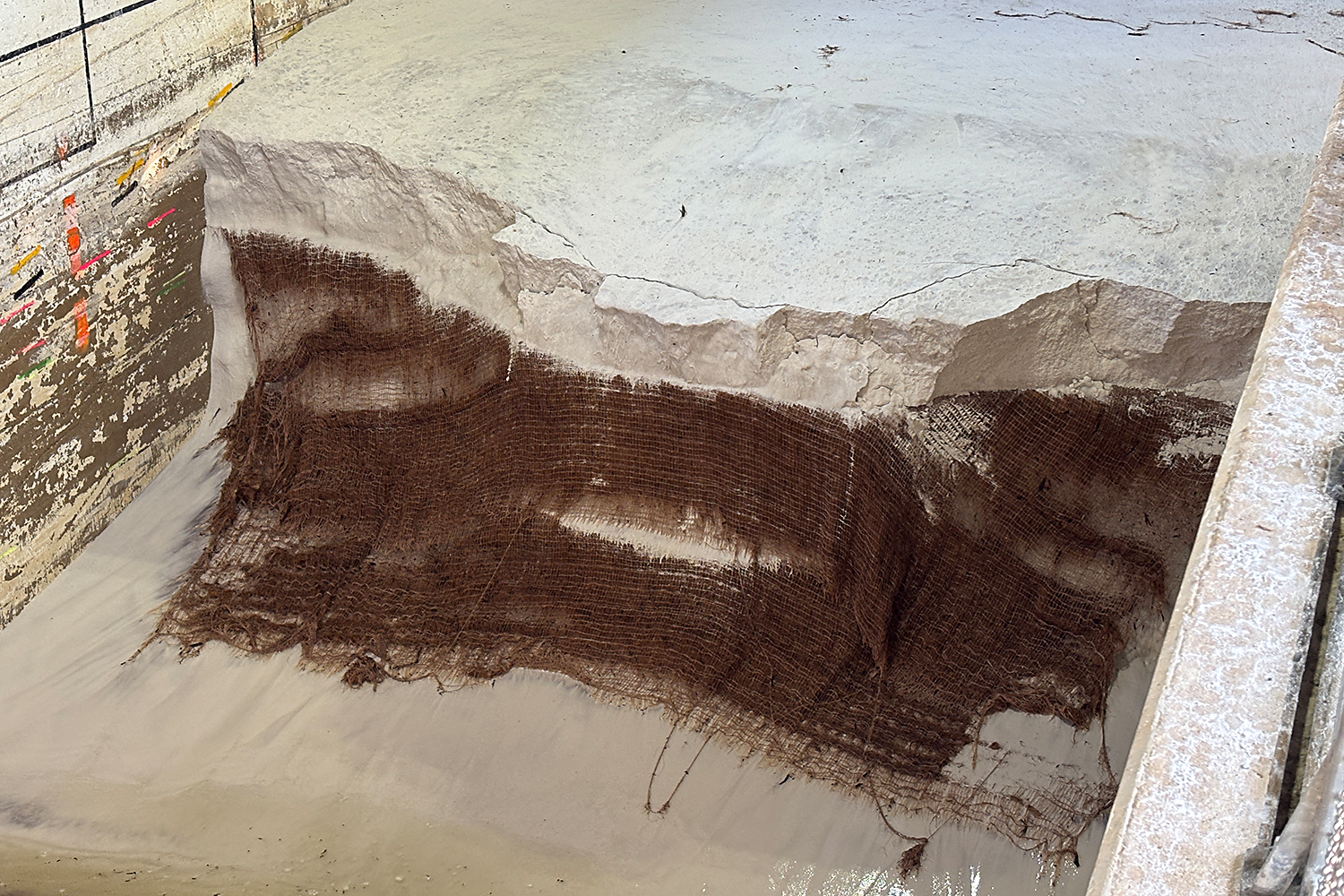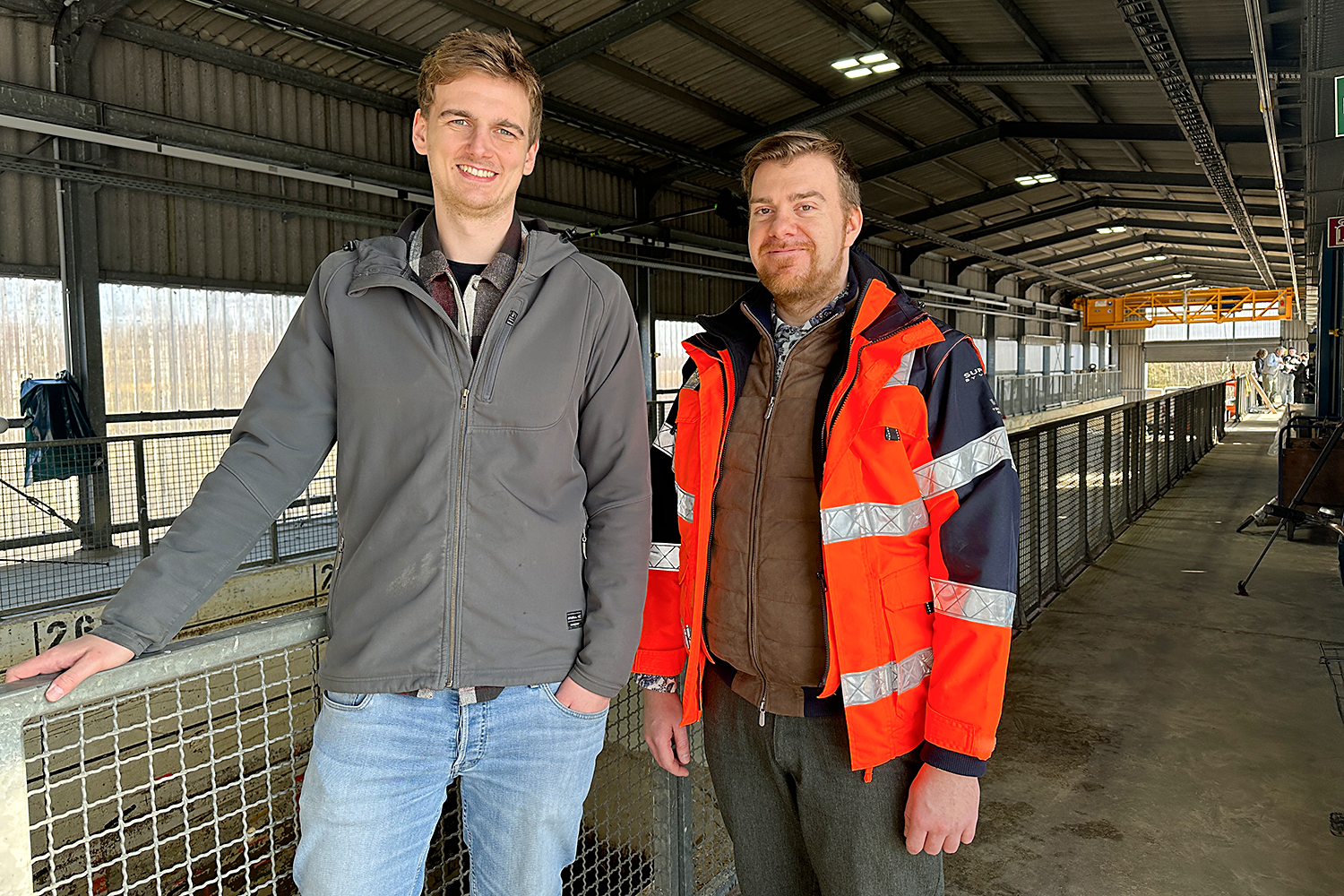Storm surge in the Large Wave Current Flume Large-scale experiments with dunes from Sankt Peter-Ording: TU Braunschweig takes a close look at dune erosion
In the Large Wave Current Flume (GWK+) at the Coastal Research Centre, scientists from Technische Universität Braunschweig have investigated the influence of dune grass on the resilience of coastal dunes. To do this, they recreated a storm surge scenario and the vegetation-covered dunes in a realistic manner. In view of rising sea levels due to climate change and more frequent storm surges, the question of the effect of vegetation on coastal protection is becoming increasingly important. Projects such as ‘Gute Küste Niedersachsen’ (Good Coast Lower Saxony) impressively demonstrate how a better understanding of natural processes can help here.

The experiments show that root systems – whether natural or artificial – can significantly increase the stability of dunes. Photo credits: Bianca Loschinsky/TU Braunschweig
The experimental setup in the Large Wave Current Flume is a mammoth technical project: a 5.60-metre-high and 70-metre-long dune, built from around 450 tonnes of sand – on a scale of 1:1, based on a characteristic profile from Sankt Peter-Ording. It took almost four weeks to construct the dune. The researchers were assisted by a construction company, which used a wheel loader to bring the sand into the channel.
Realistic sea conditions and root replacement systems in the wave channel
Six test runs, each lasting five hours, simulated the worst-case scenario of a storm surge on the North Sea coast – with wave heights of up to two metres. In addition to pure sand dunes as a reference case, various ‘root replacement systems’ were used for the first time – biodegradable coconut grids and mats designed to mimic the deep root system of dune vegetation such as beach grass.
“The increasing pressure on our coasts makes it necessary to gain a better understanding of systems such as coastal dunes or salt marsh forelands in front of dykes, as well as the effect of nature on and within our technical systems, in order to optimise them and determine their limits,” explains Prof. Nils Goseberg, Professor of Coastal Engineering and Marine Construction at Technische Universität Braunschweig and Director of the Coastal Research Centre in Hanover.
Plant roots: underrated heroes in coastal protection?

Dr.-Ing. Oliver Lojek (right) and doctoral student Lukas Ahrenbeck prepared the experiments at the Large Wave Current Flume (GWK+). Photo credits: Bianca Loschinsky/TU Braunschweig
Until now, experiments on dune erosion have mostly been conducted using sand. However, in nature, it is mainly plant roots that hold the sand in place and stabilise the dunes. These plants, especially beach grass, develop a complex root network over time that reaches several metres deep and holds the sediment in place even after storm surges. The vegetation contributes to the natural ‘self-healing’ of the dunes: when they are covered with sand, beach grass simply grows through the sand and forms new terraces – layer by layer.
“We want to find out how natural structures such as the root horizons of beach grass, which normally grows in dunes, can contribute to improving coastal protection,” says Dr. Oliver Lojek from the Leichtweiß Institute for Hydraulic Engineering and Water Resources at TU Braunschweig.
The experiments show that root systems – whether natural or artificial – can significantly increase the stability of dunes. The coconut mats used in the experiments behave similarly to real root carpets: they unfold under load, hold the sediment in place and thus reduce the erosion of sand by the incoming surf waves.
Changes in the dune profile in 3D
Another aim of the research is to investigate scaling effects – in other words, to clarify how well findings from smaller models can be transferred to reality. Previous laboratory models were often too small to realistically represent the complex interactions between waves, sand and vegetation. With the help of state-of-the-art laser scanners, changes in the dune profile are documented in three dimensions and in real time. This data provides a precise understanding of erosion processes and valuable input for modelling future coastal protection measures.
“The GWK+ in Hanover allows us to conduct large-scale experiments that are unique worldwide, and we can use them to help protect both the coast of Lower Saxony and coastlines around the world,” says Professor Goseberg. One thing is already clear: with a strong root network, dunes gain stability – and thus contribute to the ‘good coast’ of the future.
‘Good Coast Lower Saxony’ project
What is a ‘good coast’ where we can live and work safely from natural hazards, in harmony with nature, embedded in the cultural landscape that has grown up around us, in a responsible and sustainable manner? A research consortium comprising TU Braunschweig, Leibniz University Hannover and Carl von Ossietzky University Oldenburg has been investigating this question for five years with 18 doctoral students on the North Sea coast of Lower Saxony between the Ems and Weser rivers. The research project focuses on ecosystem-enhancing coastal protection, in which coastal protection works in harmony with nature and the people who live there. The project is funded by the Lower Saxony Ministry of Science and Culture (MWK) with around five million euros.
Further information: http://gute-kueste.de/
